We are honoured to welcome author Elizabeth Laird to the blog today to answer questions about her book, Song of the Dolphin Boy.
Elizabeth Laird’s novels for children take readers all around the globe and bring into focus real-world affairs, from poverty and war to refugees and pollution. Elizabeth says “I’ve had a very exciting life! Bitten by a snake in the South China Sea, arrested for murder in Ethiopia (I didn’t do it!), dodging battles in war-torn Beirut – on the list goes. And many of my novels have come out of those experiences, telling the great stories of our time – about refugees from Iraq (Kiss the Dust) and Syria (Welcome to Nowhere and A House without Walls), about children rising above poverty in Ethiopia (The Garbage King and The Fastest Boy in the World) and those caught up in war in Beirut (Oranges in No Man’s Land). Nearer home, the threat to our environment is making children anxious. In Song of the Dolphin Boy, a gang of kids take positive action to solve a pollution crisis.
Children know more about what’s going on in the world than we think they do, and they worry about the depressing news they hear. Helping them to enter into the lives of others in very different circumstances encourages empathy, broadens a child’s view of the world and helps to build her confidence.:.”
Read on for our Review Panel’s review of Song of the Dolphin Boy and an exclusive Q&A with Elizabeth. Plus, there’s a chance for you to win a whole class set of the books at the end of the post, too…
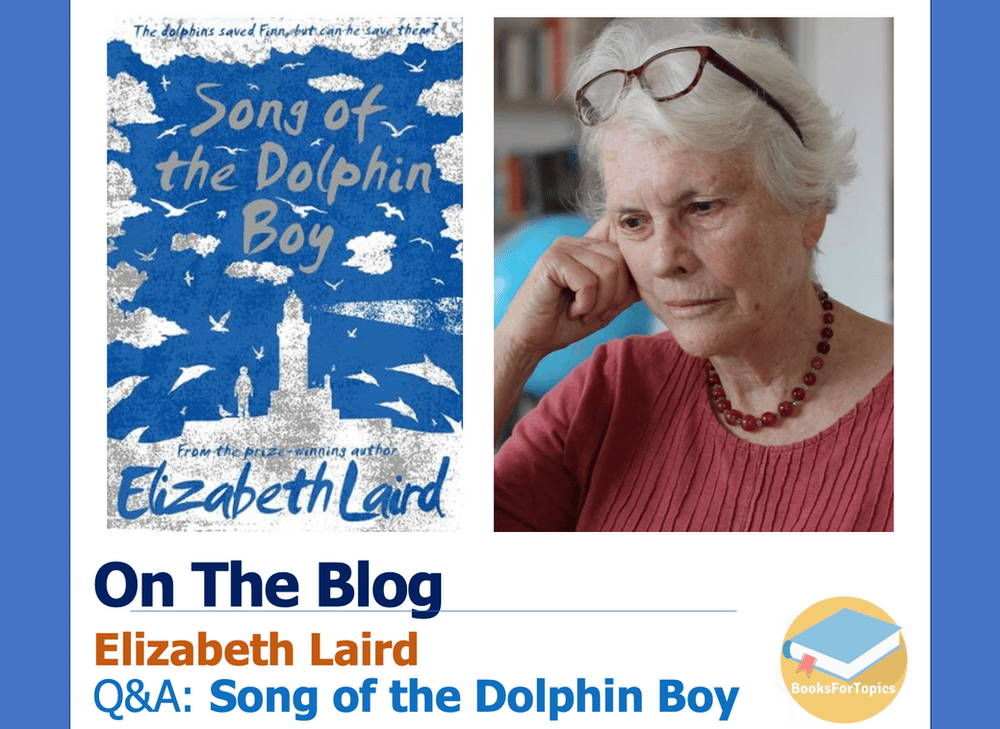
Book Title: Song of the Dolphin Boy (available here)
Author: Elizabeth Laird
Publisher: Macmillan
Publication Date: March 2018
Most Suitable For: KS2
Review:
I am always intrigued by a book that has a map on its first page and this wonderful, fast-paced and magical story by Elizabeth Laird, begins with a map of Stromhead, the setting in the far north of Scotland. Even better, the very next page is a poem about a dolphin woman – rather like the mythical selkies renowned in Scottish folklore who were able to transform between seal and human. And who would have guessed, when we are first introduced to the main character Finn, that he is the magical boy in the poem who can transform into a dolphin?
Finn too doesn’t know this at the start of the story and he is a sad and lonely character who is shunned by his peers as being rather ‘odd’. Not only is he left out of the friendship group of the children in the village school, but he also suffers at home. His dad is silent and sullen, still grieving for Finn’s mother – who the gossips of the village suggest he murdered when she disappeared without trace many years before.
Finn only finds out that he is the magical dolphin boy by chance, when he falls into the sea after being chased by the school ‘bully’. It is at this moment he realises that not only can he swim, but he becomes dolphin-like, speeding through the water and able to leap, twist and turn. A dolphin joins him to play and it is at this moment that he realises that his mother really was a dolphin woman and that he is a magical dolphin boy.
The pod of dolphins Finn is with finds balloons on the sea’s surface and, thinking they are jellyfish, tries to eat them. The dolphins quickly get into difficulty, getting tangled in the strings and in danger of ingesting the plastic and dying. This is the catalyst for the rest of the story: a fast-paced story of an environmental campaign to save the dolphins from a further balloon release in the town.
This is a story of friendship, of grief and reconciliation, of children recognising that their collective action can make a difference and a story with a strong and clear environmental message. Elizabeth Laird is a skilled writer who crafts her story to engage and enthral her young readers. She paints the picture of her characters with care and clarity and leaves the reader wanting to turn the page and to find out what happens with a growing sense of urgency as each chapter is revealed.
Reviewed by Jane Carter
Song of the Dolphin Boy is available to order from BookShop.Org or Amazon.
Q&A
with author Elizabeth Laird
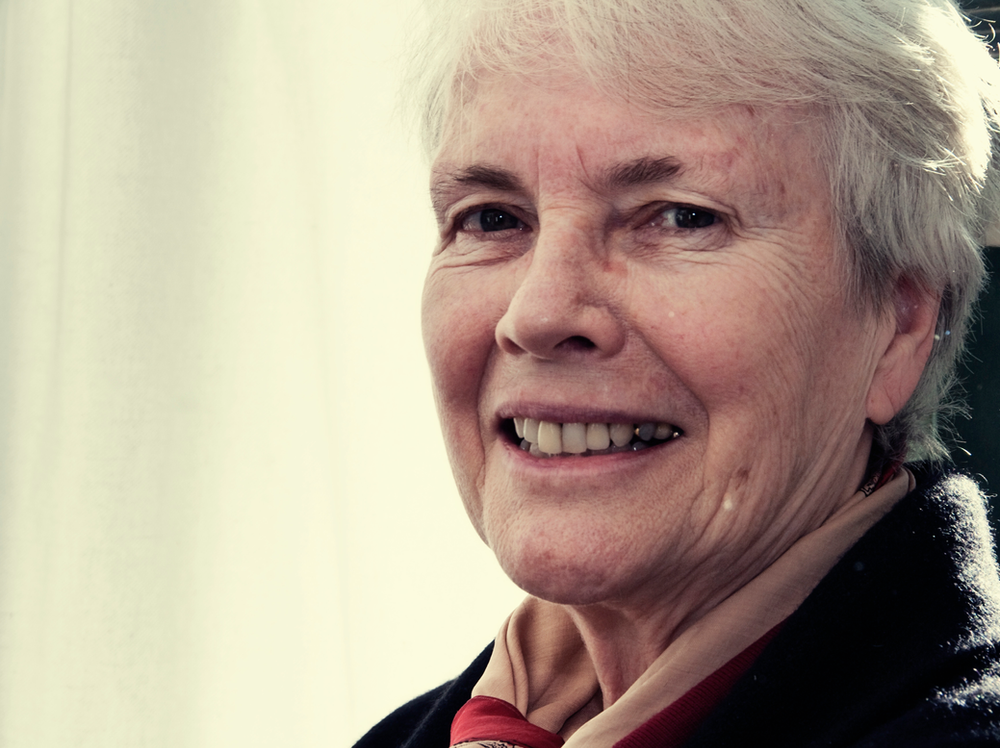
Please can you tell us about the inspiration for writing Song of the Dolphin Boy?
A few years ago, I met a wildlife cameraman who had been making films off the coast of Borneo. He was distressed by the amount of plastic pollution he encountered in the water even off the most remote beaches. ‘You’re a writer,’ he said. ‘Why don’t you do something about it?’ So I did.
A number of schools have told us that they have been drawn to the theme of plastic pollution in the story because it is an issue close to their children’s hearts. What do you hope that your readers would come to know about plastic pollution from reading the story?
I wanted to show the direct impact of plastic rubbish on animals like dolphins, which children particularly love, and I chose to focus on balloons because they’re something children enjoy. It’s important for children not to feel powerless in the fight against plastic pollution, and balloons are to some extent things they can control.
In the story, Finn is used to feeling like he never quite belongs. Some of the other children he meets in the story also feel like they’ve never fitted in. What would you say to young readers who have experienced loneliness and the feeling of being different?
Many children think they’re the only ones who feel different, and fear they don’t belong, but even those who appear super-confident can have insecurities. Reading stories where children who feel on the edge of things and eventually find acceptance can be comforting and empowering. The great thing about fiction is that it fosters empathy and self-knowledge. Book Trust has a useful section on books about bullying and isolation. Take a look at this link to find something you could introduce to children who might be feeling particularly alone. https://www.booktrust.org.uk/booklists/d/difference-acceptance-and-bullying-childrens/.
How did you research the story, and what was the most fascinating thing you discovered during the course of your research?
I contacted the Lighthouse Field Station of Aberdeen University in Cromarty on the Moray Firth (https://www.abdn.ac.uk/sbs/outreach/lighthouse/index.php). Professor Thompson and the staff there were incredibly kind and helpful. Barbara Cheney, the dolphin expert on the team, told me that each dolphin has its own ‘signature’ whistle. Mothers and calves can find each other using their special calls. That’s brilliant, isn’t it?
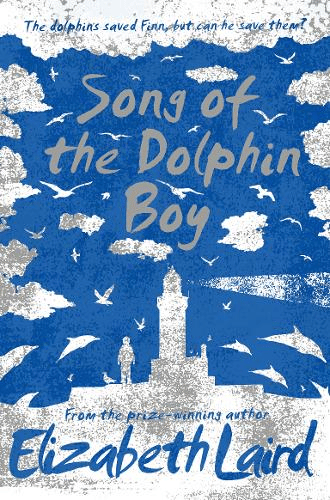
Yes – it’s fascinating! It sounds like you really enjoyed researching the marine wildlife. In the story, you describe the sea as a soft, welcoming, embracing force. What’s your own relationship with the ocean like? Do you share Finn’s growing affinity with the sea?
I do love to be beside the sea and to bathe in it, but I’m wary too. I was once bitten by a snake or stung by a stone fish (the doctors weren’t sure which) in the South China Sea and I nearly had my foot amputated. Maybe the monster’s still out there, waiting to finish the job!
What do you think the biggest danger to dolphins is at present, and what can we humans do to make a difference?
Dolphins face many threats, from being tangled in discarded fishing nets, to ingesting too much plastic which fills their stomachs and starves them, to noise pollution which interferes with their communication. Our first task is to make people aware of the harm we’re causing, then we need to promote laws and protections to save the precious mammals who live in the oceans and contribute so much to the health of the planet. It’s a question of good old-fashioned campaigning – blogging, writing and pushing politicians for change that’s needed.
Many young people are deeply concerned about climate change and about the damages that human behaviours cause to wildlife. When people feel powerless against such big forces of change, where can they find hope?
I once heard Greta Thunberg’s parents say that she had been deeply depressed before she started her school strike campaign, but that once she became an activist she found confidence and a sense of mission and purpose, which gave her hope and strength. Children can become active in positive, hopeful ways through organisations like Greenpeace, or local ‘clean-up’ campaigns, which can make all the difference to their mental well-being.
Which children’s books were your favourites as a child? And how about now?
There were far fewer books for children in the 1950s when I was a child. My favourite author was Geoffrey Trease who wrote exciting historical novels. The best thing about them was that there were always strong girl characters doing brave and interesting things – unlike many of the other books at the time! Now there are so many brilliant writers for children that it’s hard to know where to start. I love Eva Ibbotson’s books and there’s Jamila Gavin, Hilary McKay, David Almond, Frank Cottrell-Boyce, Gill Lewis… I could go on and on!
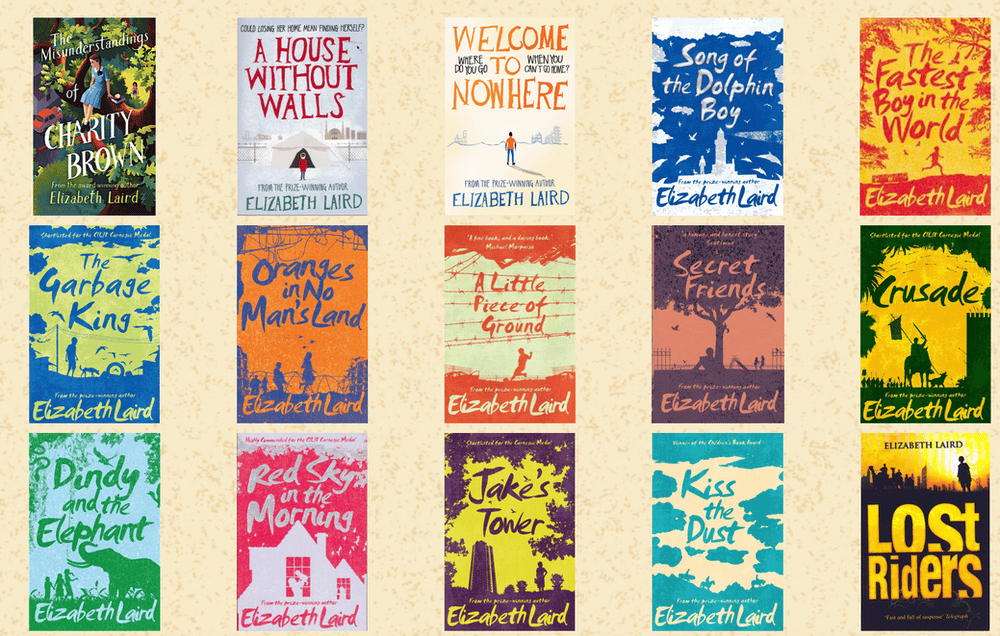
Many of your books are set in different places around the world. To what extent do you draw on your own travel experiences when you are writing story settings?
I’ve had a very adventurous life and lived in many different countries – in Malaysia, Iraq, Ethiopia, and Lebanon – and I’ve worked in lots of other countries too. I only write from personal observation and experience. When I’m planning a new novel, I spend time looking around, listening, meeting as many people as possible and asking thousands of questions. I come home with notebooks and audio files full of detailed descriptions and dialogue and set to work to turn all that material into a story.
Are there any particular travel destinations that are still on your bucket list?
Oh dear, in a perfect world there are so many places I’d like to visit! But I try to fly as little as possible now, as air travel is bad for the planet. I do make an exception to spend time with family. I’ve recently been staying with my son and his family who live in Tunisia and I’ve been travelling about that lovely country with them. It’s people I want to see now, rather than places.
Finally – we’d love to know, is there another book or writing project in the pipeline for you at the moment?
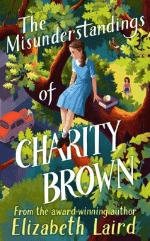
Funny you asked that right now! My new book, The Misunderstandings of Charity Brown, is due to be published on 7th July. I’ve gone right back to my childhood in the 1950s, a time when a polio epidemic was at its height. My close-knit, loving family belonged to a small religious sect, and I had to work out how to push the boundaries, question the things I’d been taught and embrace the world beyond our close community while still being loyal and true to my family. This is something so many children go through, whatever their religion or cultural background. I hope they’ll find a friend in Charity Brown.
> Order Song of the Dolphin Boy on BookShop.Org
> Order Song of the Dolphin Boy on Amazon
> Visit Elizabeth’s website
—————————–
***Book Giveaway***
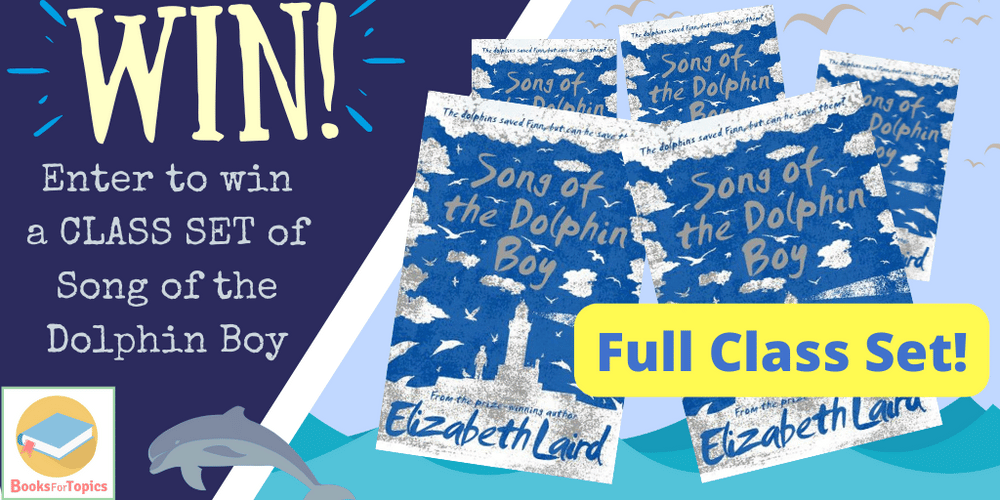
Thanks to the publishers, we have a class set of 30 copies of Song of The Dolphin Boy to give away.
To enter, follow @booksfortopics on Twitter and retweet the giveaway tweet between the evening of Thursday 23rd June and 11.59pm Wednesday 29th June 2022. UK only – terms and conditions here.
—————————–
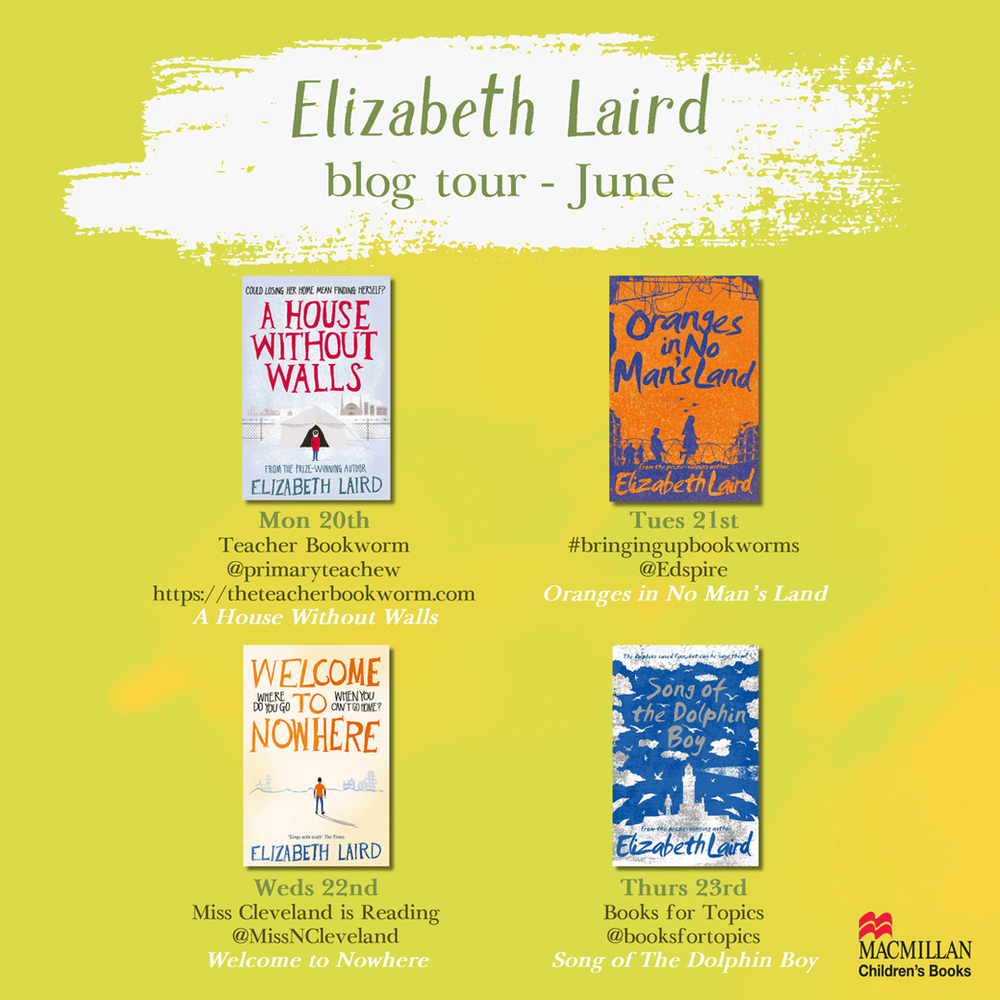
Many thanks to Elizabeth for visiting our blog and answering our questions. For more about Elizabeth’s books, follow along with the other stops on the blog tour.
Where next?
> Visit our Reading for Pleasure Hub
> Browse our Topic Booklists
> View our printable year group booklists.
> See our Books of the Month.








